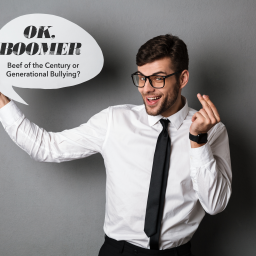There is no better time for innovation stratecution (strategy+execution) than during times like a quarantine, which most of the world is facing right now.

Prioritization is critical to the success of any effort. You may notice that, during times of turmoil, nuances of our daily work life shift and we can become more clear-headed and inward-focused. This is a sign that our priorities have reprioritized, and our focus has shifted. And at some point, we realize that we are the sum of our experiences – and the experience of being quarantined is something that will undoubtedly shape our future.
The History of Innovation and Stratecution During a Global Crisis
Over hundreds of years of challenges – from pandemics to world wars – have challenged great minds and, from that, spawned innovations, creations, and stratecutions that have changed the course of history.
Crisis Ex. #1: Bubonic Plague of 1665
Discovery - Gravity
Isaac Newton developed his theories on gravity, calculus, and optics when forced to work from home for a brief period of time due to the Bubonic plague.
Another invention during this time: cheddar cheese
Crisis Ex. #2: French Revolution of 1789
Innovation - The Ambulance
Dr. Jean Dominique Larrey invented the two-heeled, horse-pulled flying ambulance” (ambulance volant) to quickly transport up to 4 wounded at a time to the nearest hospital.
Another invention during this time: the guillotine.
Crisis Ex. #3: Cholera Pandemic of 1835–1836
Innovation - Screw propeller
Francis Pettit Smith developed the screw propulsion model stemming from his lifelong obsession with boats and farming.
Other inventions during this time: mechanical calculator and the revolver.
Crisis Ex. #4: Influenza Pandemic of 1918-1919
Invention - Superheterodyne receiver
Edwin Armstrong discovered using frequency mixing or heterodyning to convert a received signal to a fixed intermediate frequency. Virtually all modern radio and television receivers use the superheterodyne principle.
Other inventions during this time include: the french dip sandwich, crystal oscillator, hydraulic brake, the grocery bag with handles, the blender, the torque wrench, and the toaster.
Crisis Ex. #5: Great Depression of 1929-1933
Creation - Freon
Charles Midgley Jr. and Charles Kettering co-invented this odorless, colorless, non-flammable, and noncorrosive chlorofluorocarbon and hydrochlorofluorocarbon refrigerant, which is used today in air conditioning, refrigeration, and some automatic fire-fighting systems.
Other inventions during this time include: the electric guitar, golf cart, toilet brush, staple remove, tape dispenser, bug zapper, and the mini snap-action switch.
Our ability to focus – and pivot – in times of great challenge has repeatedly pushed us forward as a society and as individuals. I’m not saying you have to come up with an innovation or stratecution solution that will change the world, but finding time to clear your mind and advance an idea or hypothesis you’ve been mulling over could have a significant impact in your own life or business.
So. how can we make the most of our new sense of focus and purpose?
Be a Part of the Innovation Stratecution Solution
So many ideas get lost in translation doing the ebbs and flows of normal life. That’s why we’re such big supporters of stratecution. It’s easy to come up with an idea; it’s easy to hand it off to someone else to do. But, what happens in the middle – the stratecution layer – is the key to innovation success.
Have a business idea for years that you’ve wanted to pursue?
Now’s the time to think more deeply about it. Do market research. Write a business plan. Write a go-to-market-strategy. Find a starting point for stratecution. Is there someone you’ve been wanting to work with (or be mentored by?) Connect with – and expand upon – your network. Create a recurring cadence of online meetings or calls to start brainstorming with other people.
Have an innovative idea that you’ve been putting on the back burner?
Maybe it wasn’t the right time before, but the business climate has changed and your reprioritized idea can have a new sense of purpose. Revisit your competitive landscape research. Build a business model canvas and a potential charter. Make some phone calls to potential partners for a pilot.
Have an idea already in progress or being piloted?
Revisit your charter. Track and measure your progress against the activities to date. Reevaluate the roadblocks and mitigation ideas. Update your CSFs and KPIs to align with the new business climate. Pivot wherever needed on the execution.
What’s Next?
Well…That’s up to you. Clear heads prevail in the question to innovate. When you’re ready to take your innovation stratecution to the next level, give us a call. We may not have any giant’s shoulders to stand on, but we’re suckers for a good idea and great minds.




